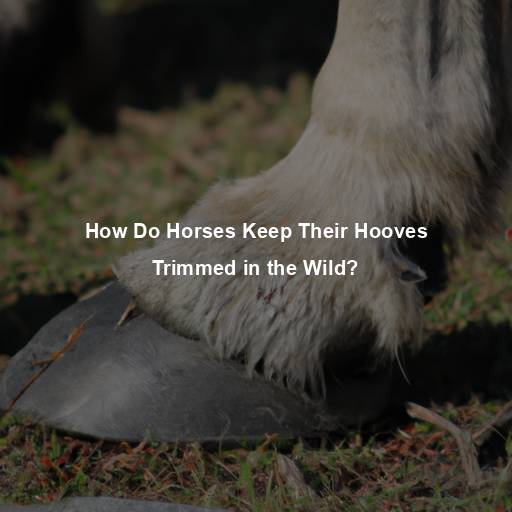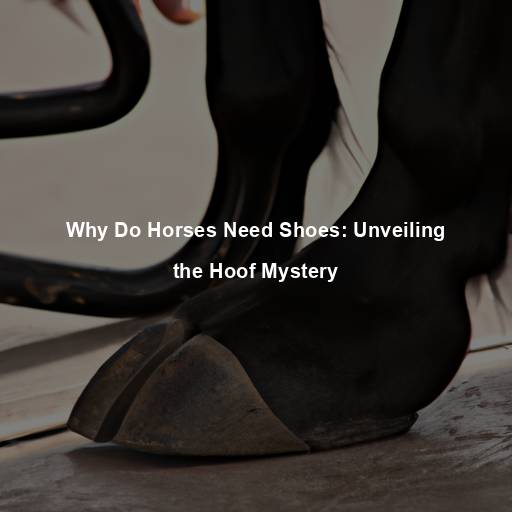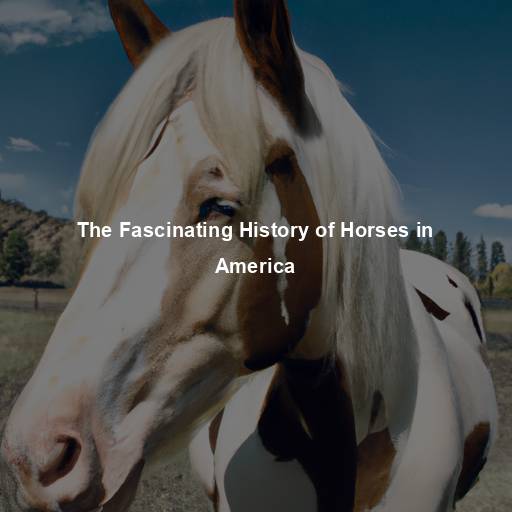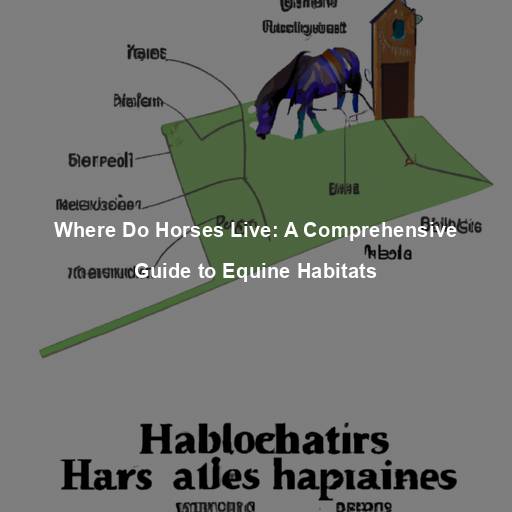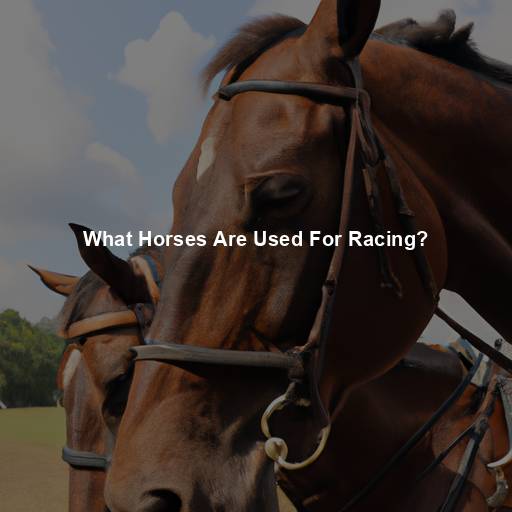How Do Horses Keep Their Hooves Trimmed in the Wild?
Last Updated on November 3, 2023 by Evan
There’s something truly enchanting about horses, isn’t there? Their majestic allure and the elegance they emanate captivate us all. Have you ever wondered how these extraordinary creatures manage to keep their hooves in pristine condition without any human intervention? It’s a fascinating enigma, the way wild horses instinctively take care of their hoof health.
Contents
- 1 The Hoof: A Horse’s Foundation
- 2 Natural Wear and Tear: The Wild Horse Advantage
- 3 The Role of Diet in Hoof Health
- 4 The Balance of Nature: A Lesson for Domesticated Horses
- 5 The Role of the Farrier: A Hoof Care Professional
- 6 The Importance of Regular Hoof Care Routine
- 7 FAQs – How do horses keep their hooves trimmed in the wild?
- 7.1 How do horses naturally wear down their hooves in the wild?
- 7.2 Are there any natural factors that contribute to hoof maintenance in the wild?
- 7.3 Do wild horses require any additional hoof care?
- 7.4 What happens if a wild horse’s hooves become overgrown?
- 7.5 How can domesticated horses replicate the natural hoof wear of wild horses?
The Hoof: A Horse’s Foundation
Delving into the intricate world of wild horses and their hoof management reveals a profound understanding of the critical role that this seemingly unassuming body part plays. As the very foundation of their graceful existence, the hoof takes center stage in offering support, mitigating the impact of every stride, and ensuring an unwavering grip on various terrains. Comprised of several interdependent elements, including the external hoof wall, the versatile sole, the enigmatic frog, and a host of internal marvels, the hoof serves as an intricate fortress shielding the delicate tissues within from harm’s way.
Hoof Growth and Wear
Horses’ hooves are constantly growing, much like our fingernails. On average, a horse’s hoof grows around 1/4 to 3/8 of an inch per month. This continuous growth is necessary to compensate for the natural wear and tear that occurs during movement. In the wild, horses’ hooves are subjected to various terrains, including rocky surfaces, sandy deserts, and grassy plains, which naturally help in wearing down the hooves.
Natural Wear and Tear: The Wild Horse Advantage
Wild horses have the advantage of living in diverse environments that naturally contribute to the wear and tear of their hooves. Let’s explore some of the factors that play a role in naturally maintaining their hoof health:
Movement and Exercise
In the untamed expanses of the open wilderness, spirited herds of horses embrace a constant state of flux, always in pursuit of sustenance, shelter, and solace. The ceaseless rhythm of their nomadic existence grants them an organic fitness regimen, ensuring that their hooves remain impeccably maintained. Navigating diverse landscapes, the harmonious interplay between their sturdy hooves and the earth effortlessly whittles away at excess growth, an elegant dance of friction and adaptation that keeps them fleet of foot.
Varied Terrains
In the untamed realm where horses roam freely, their journey is far from predictable. The unyielding landscapes they traverse, be it the jagged slopes of mountains or the shifting sands of riverbeds, present an ever-changing terrain for their hooves to endure. This dynamism plays a vital role in the natural maintenance of their hooves, as these rugged surfaces wear away the hoof wall, preventing it from growing unchecked. It’s a delicate balance that ensures the wild horses stay fleet-footed and their hooves remain in ideal condition.
Natural Erosion
In addition to movement and varied terrains, wild horses also benefit from natural erosion. Elements such as sand, gravel, and rough vegetation contribute to the gradual wearing down of the hoof wall. As horses traverse these abrasive surfaces, the friction gradually files away excess growth, resulting in a balanced hoof length.
The Role of Diet in Hoof Health
When it comes to keeping a horse’s hooves in tip-top shape, there’s more than meets the eye. Sure, natural wear and tear come into play, but there’s another factor that can’t be ignored – the horse’s diet. It turns out that what these majestic creatures chow down on can greatly impact the health of their hooves. Take wild horses, for instance.
Nutritional Balance
Wild horses have access to a diverse range of plant species, each offering different essential nutrients. These nutrients, including biotin, zinc, copper, and amino acids, contribute to hoof health and growth. Unlike domesticated horses that may require additional supplementation, wild horses naturally obtain a balanced diet from their natural surroundings.
Natural Abrasives in Diet
When wild horses go on a culinary adventure, they sometimes come across some unconventional bites. These include plants with a rough and gritty texture that seem more like a challenge than a nourishing meal. Surprisingly, these hard-to-chew grasses and prickly vegetation actually serve a purpose – they act as natural abrasives, offering a unique form of hoof maintenance. By gnawing on these silica-rich blades, the horses inadvertently engage in a dental dance, helping to keep their hooves in tip-top shape and preventing overgrowth.
The Balance of Nature: A Lesson for Domesticated Horses
Wild horses have long held secrets to maintaining healthy hooves, and now their wisdom can be applied to domesticated horse care. Though domesticated horses may not have the luxury of a wild setting, there are effective ways to replicate the advantages found in nature. By studying and implementing the natural stimuli that wild horses encounter, horse owners and caretakers can provide the best hoof care possible, ensuring the well-being and longevity of their beloved equines.
Regular Exercise and Turnout
In order to ensure the well-being of our beloved equine companions, it is paramount to prioritize their need for exercise and ample turnout. By engaging in regular movement on a variety of surfaces, ranging from soft grass to coarse gravel, domesticated horses can experience the natural wear and tear that their wild counterparts encounter. This not only fosters healthy hoof growth, but also mitigates any potential complications that may arise from excessive growth. Our steadfast dedication to providing horses with a diverse exercise routine is an indispensable aspect of their overall happiness and optimal health.
Balanced Diet and Supplementation
Ensuring domesticated horses receive a well-balanced diet is crucial for hoof health. Consulting with a veterinarian or equine nutritionist can help create a diet plan that includes essential nutrients for optimal hoof growth. Additionally, when necessary, supplements containing biotin and other beneficial ingredients can be administered to support hoof health.
Regular Farrier Visits
While wild horses naturally maintain their hooves, domesticated horses may still benefit from periodic farrier visits. Trimming and balancing the hooves by a professional farrier helps prevent common issues like overgrowth, imbalances, and potential lameness. Regular farrier visits are especially important for horses with specific hoof conditions or those engaged in high-performance activities.
Preventing Overgrowth and Imbalances
Ensuring the well-being of our equine companions is no small feat, especially when it comes to the intricate art of hoof care. Neglecting the delicate balance between growth and function can pave the way for a tumultuous journey of discomfort and unease for our majestic horses. By regularly tending to their hooves, we dance upon the tightrope of prevention, warding off the dreaded overgrowth that can unhinge their gait and plunge them into the abyss of lameness. With the delicate touch of a skilled farrier, trimming these hooves at precise intervals becomes the symphony that harmonizes their weight distribution and restores the rhythm of their stride.
Addressing Hoof Conditions and Abnormalities
Taking proper care of your horse’s hooves is essential in ensuring their overall health and well-being. By staying on top of regular hoof maintenance, you can detect and address any potential issues before they become serious. Conditions like thrush, abscesses, cracks, and laminitis can be identified early on during routine visits with your farrier. By taking immediate action and providing appropriate treatment, you can effectively prevent these conditions from worsening and causing long-term damage to your horse’s hooves.
Supporting Performance and Soundness
For horses engaged in high-performance activities, proper hoof maintenance is crucial for optimal performance and soundness. Regular trimming and balancing of the hooves help ensure proper breakover, which affects the horse’s stride and movement. Well-maintained hooves provide the necessary support, shock absorption, and traction required for activities such as jumping, dressage, racing, or working.
The Role of the Farrier: A Hoof Care Professional
When it comes to hoof care and maintenance for domesticated horses, the role of the farrier is indispensable. Farriers are skilled professionals trained in the art and science of hoof care. They play a vital role in ensuring the overall health and soundness of a horse’s hooves. Let’s explore the responsibilities and services provided by farriers:
Hoof Trimming and Balancing
As a farrier, one finds themselves amidst the enigmatic world of equine hoof care, where the artistry lies in delicately sculpting and taming nature’s growth. Armed with a repertoire of specialized tools, these skilled artisans harness their craft to trim, shape, and maintain the majestic hooves of horses. With unwavering focus and the pursuit of equine harmony, they embark on the perplexing endeavor of striking the perfect balance, ensuring each hoof is aligned and the weight distribution remains a delicate equilibrium.
Shoeing when necessary
Did you know that farriers do more than just trimming? They also offer shoeing services to our equine friends when needed. Horseshoes, whether made of metal or synthetic materials, play a crucial role in providing extra support and protection for horses. Whether it’s the rigorous activities they engage in or specific hoof conditions they face, these customized shoes are carefully selected and fitted by farriers to meet the unique needs of each horse.
Evaluating Hoof Health
When it comes to the well-being of our equine companions, there’s one profession that truly knows how to step up – farriers. These skilled individuals possess the uncanny ability to decipher the mysterious language of hooves, using their keen eyes to seek out any signs of irregularities, pesky infections, or unwelcome inflammations. With their watchful gaze and expert touch, farriers become the unsung heroes of the horse world, safeguarding the health of our majestic friends by catching problems in their infancy and suggesting the perfect remedies to keep them trotting along gracefully.
Providing Advice and Education
Farriers often serve as a valuable source of advice and education for horse owners. They can provide guidance on proper hoof care, diet, and environmental factors that may impact hoof health. Farriers may recommend specific products or supplements to support hoof growth and address any underlying issues.
Thrush
Thrush is a bacterial infection that affects the frog of the hoof. It is characterized by a foul odor, black discharge, and a soft, crumbly texture of the frog. Thrush thrives in moist and dirty environments. To prevent thrush:
- Maintain clean and dry living conditions for the horse, regularly removing manure and wet bedding.
- Ensure proper hoof hygiene by cleaning the hooves daily and applying a thrush treatment recommended by a veterinarian or farrier.
Ensuring proper hoof care is essential for the overall well-being of your equine companion. One way to promote healthy hooves is by allowing sufficient turnout time, giving them the opportunity to dry and breathe naturally. By doing so, you are enabling the hooves to maintain their vitality and ward off any potential issues that may arise from prolonged confinement. Remember, happy hooves make for a happy horse, so grant them the freedom they need!
Hoof Abscesses
Hoof abscesses occur when bacteria enter the hoof through a puncture wound or compromised area, leading to infection and the formation of pus. Signs of an abscess may include lameness, heat in the hoof, and sensitivity to pressure. To prevent hoof abscesses:
It’s crucial to maintain a vigilant eye on your horse’s hooves, ensuring they are free from any unexpected injuries or puncture wounds. By conducting regular inspections and promptly addressing any issues that arise, you can help keep your equine companion healthy and comfortable. Remember, a thorough hoof check is an essential part of responsible horse care, supporting their overall well-being.
Creating a safe and sterile space is crucial when it comes to safeguarding yourself against harmful infections. By ensuring that your environment remains clean and dry, you can significantly reduce the chances of encountering any undesirable organisms that may pose a threat to your well-being. Embracing this practice will help promote a healthier and more secure lifestyle, offering you peace of mind and tranquility in an uncertain world.
Taking care of your horse’s well-being goes beyond just ensuring they receive proper nutrition and a balanced diet. It is essential to prioritize their hoof health and immune function to keep them thriving. By providing them with the right nutrients and a well-rounded diet, you are giving them the best chance to stay strong and healthy. So, make sure to incorporate these crucial factors into your horse’s care regimen for optimal overall health and vitality.
Hoof Cracks
When it comes to the intricate world of hooves, cracks can be quite a puzzle. These enigmatic fissures can emerge from a myriad of causes, like an overgrowth of the hoof, an imbalance in weight distribution, or even a sudden jolt of trauma. The spectrum of cracks ranges from mere surface imperfections to profound structural rifts. But fret not, for there are ways to unravel this perplexity and shield your hooves from such mysterious encumbrances.
Ensuring the well-being of your equine companion involves maintaining a consistent farrier schedule, as it plays a vital role in preventing issues such as excessive hoof growth and imbalances. By regularly providing proper trimming and balancing, you’ll safeguard your horse from potential discomfort or even debilitating conditions. Keeping these crucial appointments will keep your equine partner on solid ground and pave the way for their continued health and vitality.
– Maintain a consistent exercise routine to promote healthy hoof wear and strengthen the hoof structure.
When it comes to caring for your horse’s hooves, moisture can be a double-edged sword. While it is crucial to provide them with hydration, excessive exposure to moisture can have unexpected consequences. It might surprise you to learn that prolonged wet conditions can actually weaken the hoof wall, making it more susceptible to cracking. So, strike a balance and protect your horse’s hooves from the perils of too much moisture.
Laminitis
Laminitis, also known as founder, is a painful and potentially debilitating condition that affects the sensitive laminae within the hoof. It can be caused by various factors, including diet, obesity, metabolic issues, or excessive concussion on hard surfaces. To prevent laminitis:
- Provide a balanced diet, ensuring that horses have access to high-quality forage and limiting access to lush pasture or feeds high in sugars and starches.
Keeping a close eye on your horse’s weight is essential for their overall well-being, as excess pounds can lead to the development of a serious condition known as laminitis. By diligently monitoring and managing their weight, you can help protect your equine companion from this perplexing and potentially debilitating ailment. Remember, a healthy weight is of utmost importance, so stay proactive and attentive to your horse’s dietary needs to avoid any unexpected bursts of health issues. - Avoid overworking horses on hard surfaces and provide proper hoof support through regular trimming and shoeing when necessary.
The Importance of Regular Hoof Care Routine
Maintaining the health of your horse’s hooves goes beyond merely preventing hoof issues; it is an intricate dance that requires a consistent and proactive approach. By establishing a regular hoof care routine, you can unlock the secrets to preserving the overall well-being of your equine companion. Explore the depths of this enigmatic process, spot the subtlest signs of trouble, and embark on a journey towards promoting soundness and utter hoof happiness. Delve deep into the captivating world of hooves, where the right routine is the key that unlocks a realm of perplexing enchantment.
Daily Hoof Cleaning
Cleaning the hooves daily is an essential part of hoof care. Use a hoof pick to remove dirt, debris, and manure from the hooves. This not only helps maintain hygiene but also allows for early detection of any changes or abnormalities in the hooves.
Regular Trimming and Balancing
Keeping up with routine visits from a knowledgeable farrier is key to maintaining the health of your horse’s hooves. Aim for appointments every 6-8 weeks, but always follow the recommendations of your trusted farrier. By providing regular trimming and balancing, these skilled professionals help prevent overgrowth, address imbalances, and correct any abnormalities, ensuring that your horse’s hooves stay in the best possible condition. Don’t underestimate the importance of proper hoof alignment and optimal hoof length – your horse will thank you for it!
Environmental Considerations
Creating a safe and comfortable haven for your majestic equine companion is of paramount importance, particularly when it comes to their precious hooves. Ensuring a consistently pristine and dry living space is an instrumental step in mitigating the potential perils that hoof-related predicaments might pose. By diligently eliminating manure and damp bedding on a regular basis, and shrewdly circumventing prolonged contact with muddy or excessively wet surfaces, you fortify the chances of your horse skipping through life with healthy and happy feet. Moreover, taking strides to establish impeccable drainage and diligently maintaining turnout areas will fortify the fortress of hoof health.
Nutritional Support
Ensure your horse receives a balanced diet that supports overall hoof health. Consult with a veterinarian or equine nutritionist to determine the appropriate diet for your horse’s specific needs. Consider feeding supplements that contain ingredients beneficial for hoof growth and strength, such as biotin, zinc, and omega-3 fatty acids.
FAQs – How do horses keep their hooves trimmed in the wild?
How do horses naturally wear down their hooves in the wild?
Out in the untamed wilderness, horses have a remarkable knack for keeping their hooves in tip-top shape. How do they do it, you ask? Well, it’s a combination of their ceaseless wandering and the unpredictable terrain they navigate. From meandering walks to exhilarating gallops, these majestic creatures gracefully traverse a multitude of surfaces, each one contributing to the gradual wear and tear of their hooves. Mother Nature, in her infinite wisdom, has designed it so that this constant movement keeps the hooves perfectly balanced and beautifully shaped.
Are there any natural factors that contribute to hoof maintenance in the wild?
Yes, several natural factors contribute to hoof maintenance in the wild. Firstly, horses are social animals, and they naturally form herds or groups. These social interactions involve playful behaviors, running, trotting, and galloping, which naturally wear down the hooves. Secondly, the presence of abrasive surfaces such as rocks, gravel, and even hard-packed earth on their natural habitats further aids in the natural trimming process. Additionally, natural grazing behaviors compel horses to move long distances in search of food, which involves constant walking and helps in wearing down their hooves evenly.
Do wild horses require any additional hoof care?
Generally, wild horses do not require additional hoof care as their hooves naturally adapt and maintain themselves. However, it is important to note that wild horses live in ideal environments with varied terrain and constant movement. Domesticated horses may not have the same opportunities for natural hoof wear. Domestic horses kept in pastures with limited space or soft footing may need additional hoof care. Regular hoof trimming and monitoring by an experienced farrier or equine veterinarian are often necessary for domestic horses to maintain optimal hoof health.
What happens if a wild horse’s hooves become overgrown?
In the wild, horses’ hooves rarely become significantly overgrown due to the constant wear they naturally experience. However, if a wild horse’s hooves did become overgrown, it could cause discomfort, affect their ability to move efficiently, and potentially lead to lameness. In such cases, the horse may alter its movement patterns to compensate, which can result in problems in other areas of the body. However, it is important to note that in the wild, natural selection plays a role, and horses with severe hoof issues may have lower chances of survival.
How can domesticated horses replicate the natural hoof wear of wild horses?
To replicate the natural hoof wear of wild horses, domesticated equines can be provided with an environment that encourages movement and natural challenges for their hooves. This can include regular turnout in varied terrain, such as pasture or paddocks with gravel, rocks, or hard-packed dirt. Additionally, allowing horses to move freely and promoting social interactions with other horses can also aid in the natural wear of their hooves. However, it is crucial to remember that not all domesticated horses have the same hoof conformation, so it is important to consult with an equine professional to determine the individual horse’s needs and ensure proper hoof care.

